There are three things an automobile engine needs to run: spark, gas, and compression. When the engine doesn’t start, these are the places to begin the search for a problem. I decided to start my search with the spark.
My first candidate for issue was the spark plugs. These are the source of the spark in the above requirements of the engine. Basically, electricity is pushed across a gap in the spark plug, creating a spark.
I found this site, which explains it in much more detail: How Automobile Ignition Systems Work: Spark Plugs
To do it’s job, the spark plug needs to be clean (so the electricity can be conducted) and the gap needs to be just right. I decided to check the plugs on Daisy. They are located on the passenger side of the engine. This is a view of the engine when the hood on that side is opened up:
The spark plugs are screwed into the engine block with metal ribbons connecting them to the distributor. The charge comes from the distributor, through the ribbions, into the spark plugs and then <ZAP> a spark across the gap in the plug. To get them out, first you have to unscrew the cap that holds the ribbon in place, then take a deep set socket to unscrew the plugs from the engine. You can kind of see the socket I used in the picture below.
When I got one plug out, it was clear it was dirty and should likely be replaced. The picture below shows one of my old spark plugs (on the left) and a new one (on the right).
Notice how dirty the old one is and how shiny the new one is in comparison. A spark would have a hard time getting through the grime on the old one. The good news is that spark plugs are one of the cheapest fixes in the car — about $6.50 for the set of four at my local auto parts store.
Before putting them into the engine, they need to be “gapped”. This is adjusting the width of the gap so that the spark is just right for the car. The gap for each car is different – for Daisy I needed a 0.035″ gap.
Sadly, I didn’t get a good picture of one of my new plugs on it’s side to show the gap, but here’s one of the old, dirty ones. The gap in question is the one between the body of the spark plug and that little “arm” at the top in this picture.
I have a coin-type gap tool – there are others out there, and I might get one someday, because I wasn’t overly happy with the coin-type one. But, it did get the job done.
Start by measuring the gap. Insert the edge of the coin gap tool at the smallest end, and pivot the coin until it is snug in the gap. My first measurement came up at about 0.025″, which was too small.
With the coin tool, the way to increase the gap is to use the hole in the tool to pry open the gap.
My next attempt measured about 0.040″, which was too big.
To shrink the gap, I tapped lightly with a hammer. It’s possible to break off that little arm, so you can’t be too vigorous with it. I think I made it a little too small this time, but after shrinking it again, I got it just right.
Then it screws back into the engine block, tightening a bit with the socket. Then connect the metal ribbon again by replacing the small cap nut.
Repeat with the other three spark plugs, and that’s it!
This isn’t the only failure point for spark, but it’s the one I already knew how to do!

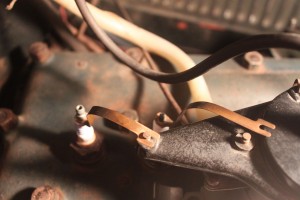
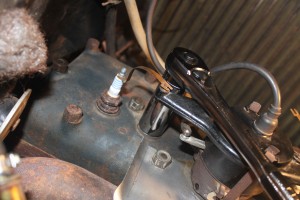

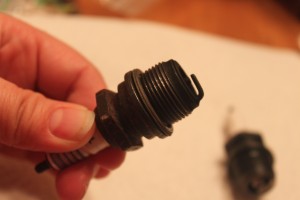
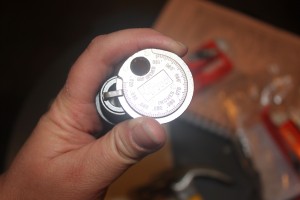
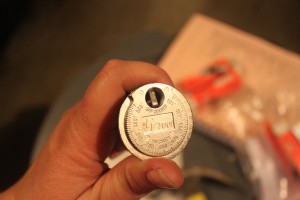

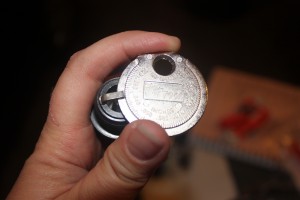
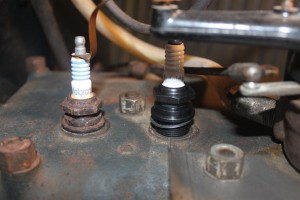

Recent Comments